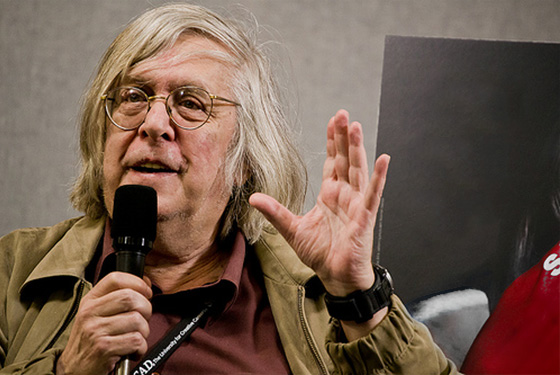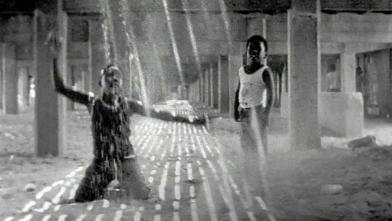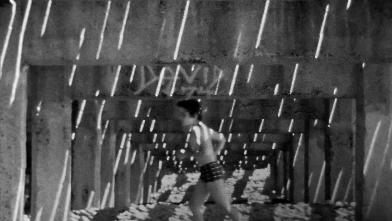This appeared in The Soho News (August 18, 1981). Apologies for the stupid headline; my editor at the time was addicted to bad puns of this kind.– J.R.
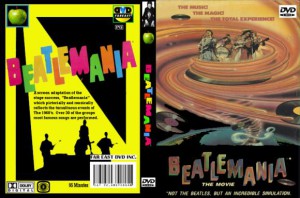
An Enemy of the People
Directed by George Schaefer
Public Theater
Beatlemania — The Movie
Directed by Joe Manduke
A cherished personal project of Steve McQueen, who served as executive producer as well as lead actor, Henrik lbsen’s An Enemy of the People, scripted by Alexander Jacobs, is a lot more appealing and less forbidding than its cultural aura might suggest. That McQueen was unable to get this 1977 film released prior to his death is unfortunate yet unsurprising; given the absence of outlets for movies of this kind in the United States, I would have thought that cable might prove to be its ideal resting place. But at least for us Manhattan country folk, it’s once again thanks to the underappreciated services of the Public Theater that we’re able to see it at all.
McQueen made this movie when he knew that he was dying of cancer and decided that he wanted to be remembered for something more than his blue-eyed beefcake parts. An advocate of Laetrile cancer therapy -– banned by the FDA, and usually pegged as “controversial” in this country – McQueen had to go to a Mexican clinic to get the treatment he wanted and must have had plenty of reasons to identify with Ibsen’s persecuted, innocent, and idealistic hero. Read more
In my more than 20 years at the Chicago Reader, whenever an old film came to town that had a Reader capsule on file by Dave Kehr, my long-term predecessor at that paper (who left the paper in the mid-1980s), I always had the option of either using that old capsule or writing a new one. On almost every occasion when this happened, I opted for the former — for my money, Dave was and is the best capsule reviewer in the business, bar none. But when it came to The Best Years of Our Lives, I eventually decided that I had to write a new one. Below are the two capsules in question:
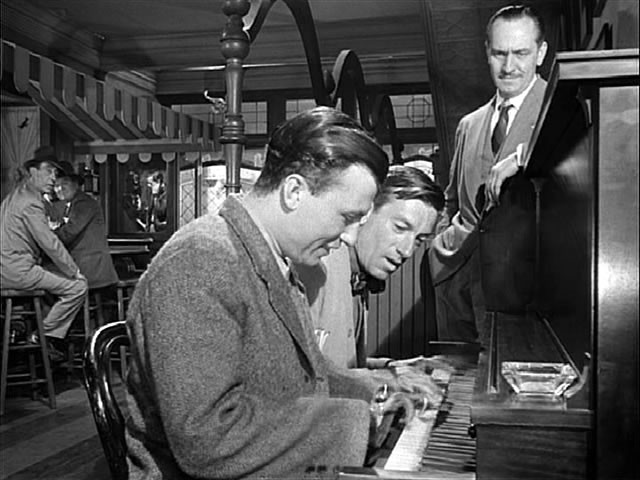
Perceived in 1946 (to the tune of nine Academy Awards) as a sign that the movies had finally “grown up,” William Wyler’s study of a group of men returning to civilian life after the war was a tremendous commercial success and helped to create Hollywood’s postwar highbrow style of pseudorealism and social concern. The film is very proud of itself, exuding a stifling piety at times, but it works as well as this sort of thing can, thanks to accomplished performances by Fredric March, Myrna Loy, and Dana Andrews, who keep the human element afloat. Read more
This book review, which I’ve alluded to previously on this site, appeared in the November 2, 1980 issue of The Soho News. —J.R.
Under the Sign of Sontag
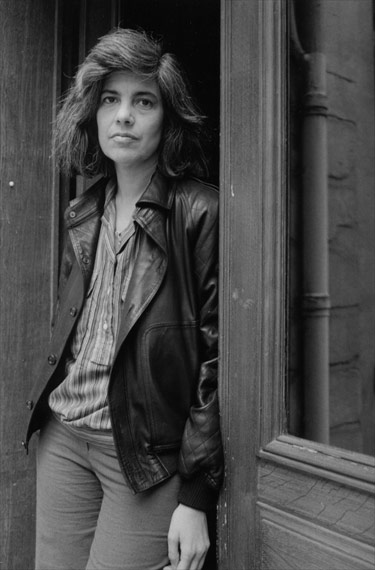
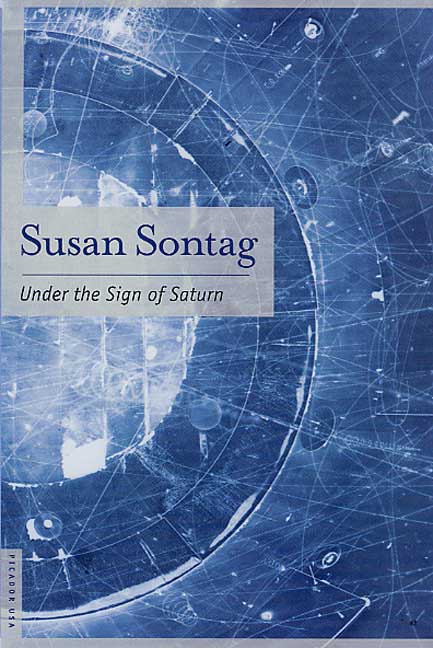
Under the Sign of Saturn
By Susan Sontag
Farrar, Straus & Giroux, $10.95

If, dialectically speaking, every book can be said to have an unconscious — a repressed subtext — one can find glimpses of the unconscious of this one in the misleading flap copy that quotes from an interview (“Women, the Arts, and the Politics of Culture,” Salmagundi 31-32) and mentions the inclusion of a “famous exchange on fascism and feminism” (apparently with Adrienne Rich, in the March 20, 1975 New York Review of Books), both regrettably missing from this slim volume of seven essays.
These omissions betray the absence of a gritty, indecorous social context — a sense of Sontag existing in the world, not merely staging grand Platonic shadow-plays in the theater of her mind. Much as Illness as Metaphor (1978) was partially structured around her refusal to allude once to her own personal struggle, this book discreetly, indirectly dances around the notion that the subject of every essay proposes a different kind of mirror to the author, a speculative self-portrait. Read more

After Jacques Rivette’s 750-minute comic serial Out 1 (1971) was turned down by French state TV, Rivette spent most of a year editing the material into this scary 255-minute masterpiece—not so much a digest as a different film with its own style and rhythms. Spectre (1972) tells the same basic story about two Parisian theater groups preparing Aeschylus plays and two eccentric loners, a middle-class deaf-mute (Jean-Pierre Leaud) and a working-class flirt (Juliet Berto), who stumble upon evidence of a secret group that hopes to control Paris. The actors created their own characters and dialogue; what emerges is a strange mix of bravura acting styles, an unforgettable evocation of the period, and a haunting puzzle. With Francoise Fabian, Bernadette Lafont, Michel Lonsdale, and Bulle Ogier. In French with subtitles. Showing in a 35-millimeter restoration with a 15-minute intermission. Sat 6/9, 3 PM, Gene Siskel Film Center. Read more

My favorite Pedro Costa feature to date, an inviting “Open, sesame” to all his work, is his second (1994), a very personal remake of Jacques Tourneur’s I Walked With a Zombie (1943). It follows an obscurely motivated Lisbon nurse (Ines de Medeiros) accompanying a construction worker in a coma (Isaach de Bankolé) back to his native village, on a spectacular volcanic island in Cape Verde, once a hub of the slave trade. (The film’s original and much better title is “Casa de Lava,” or “House of Lava”). While she waits for him to wake she gets to know some of the villagers, including another European (the terrific Edith Scob) who unlike her has succeeded in going native. Gorgeously shot, with fabulous Creole music, this mysterious and voluptuous spiritual adventure has afforded me far more pleasure than any new film I’ve seen this year. In Portuguese and Creole with subtitles. 110 min.
 Read more
Read more
My book Film: The Front Line 1983 (Denver: Arden Press), intended by its editor-publisher to launch an annual series, regrettably lasted for only one other volume, by David Ehrenstein, after two other commissioned authors failed to submit completed manuscripts. Miraculously, however, this book remained in print for roughly 35 years, and now that it’s finally reached the end of that run (although some copies can still be found online), I’ve decided to reproduce more of its contents on this site, along with links and (when available) illustrations. I’m beginning with the book’s end, an Appendix subtitled “22 More Filmmakers,” which I’m posting here in three installments, along with links and (when available) illustrations. — J.R.
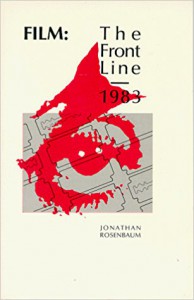
MAURIZIO NICHETTI is a name I happen to know strictly by chance. My last trip to Europe (and only trip to Italy) consisted of three days at the Venice Film Festival in 1979, where I was invited to participate in a conference devoted to Cinema in the Eighties. And as I noted in an account of that conference in the December 1979 American Film, one film that I happened to see during those three days, Maurizio Nichetti’s Ratataplan — a first feature with an onomatopoeic title based on the sound of a drum cadence — may have actually suggested more about the subject of the conference than any of the lectures I heard. Read more
My book Film: The Front Line 1983 (Denver: Arden Press), intended by its editor-publisher to launch an annual series, regrettably lasted for only one other volume, by David Ehrenstein, after two other commissioned authors failed to submit completed manuscripts. Miraculously, however, this book remained in print for roughly 35 years, and now that it’s finally reached the end of that run (although some copies can still be found online), I’ve decided to reproduce more of its contents on this site, along with links and (when available) illustrations. I’m beginning with the book’s end, an Appendix subtitled “22 More Filmmakers,” which I’m posting here in three installments, along with links and (when available) illustrations. — J.R.

PAULA GLADSTONE. In Gladstone’s mainly black-and-white, hour-long, Super-8 The Dancing Soul of the Walking People (1978), possession and. dispossession both happily become very much beside the point. Shot over a two-year period, 1974-1976, each time the filmmaker went home to Coney Island (“I’d take my camera out and walk from one end of the land to the other,” she reports in Camera Obscura [No. 6]; “I’d talk to people on the streets and film them”), The Dancing Soul of the Walking People is basically concerned with the space underneath a boardwalk, a little bit like the luminous insides of a translucent zebra on a sunny day — an interesting kind of space, at once public and private, that is traversed by receding strips of light, camera pans, and people, in fairly continuous processions and/or rhythmic patterns. Read more
My book Film: The Front Line 1983 (Denver: Arden Press), intended by its editor-publisher to launch an annual series, regrettably lasted for only one other volume, by David Ehrenstein, after two other commissioned authors failed to submit completed manuscripts. Miraculously, however, this book remained in print for roughly 35 years, and now that it’s finally reached the end of that run (although some copies can still be found online), I’ve decided to reproduce more of its contents on this site, along with links and (when available) illustrations. I’ll begin with the book’s end, an Appendix subtitled “22 More Filmmakers,” which I’ll post here in three installments, along with links and (when available) illustrations. — J.R.

APPENDIX: 22 MORE FILMMAKERS
All sorts of determinations have led to the choices of the individual subjects of the 18 previous sections — some of which are rational and thus can be rationalized, and some of which are irrational and thus can’t be. To say that I could have just as easily picked 18 other filmmakers would be accurate only if I had equal access to the films of every candidate. Yet some of the arbitrariness of the final selection — particularly in relation to the vicissitudes of American distribution and other kinds of information flow — has to be recognized. Read more

THE INVISIBLE DRAGON: ESSAYS ON BEAUTY (revised and expanded edition) by Dave Hickey (Chicago/London: The University of Chicago Press), 2009, 123 pp.
Fellow fans of art critic Dave Hickey should be alerted to the fact that an extensively upgraded edition of his 1993 book The Invisible Dragon has recently appeared that seems to be almost twice as long as its predecessor, with a new introduction and an additional essay, “American Beauty,” that’s considerably longer (over 50 pages) than any of the four essays in the first edition. Even if you find the new introduction, written entirely in the third person, a mite off-putting, the new essay reaffirms Hickey as a major critical voice and terrific prose stylist. I’m not sufficiently well-versed in art history to be able to judge it confidently on those terms, but the erudition on display is pretty daunting, to say the least.
I discovered Hickey thanks to film scholar Dudley Andrew through Hickey’s extraordinary 1997 collection Air Guitar (see below) a radically populist and semiautobiographical look at pop culture that remains a particular favorite–although I subsequently bought Hickey’s two collections of short stories, the 1989 Prior Convictions and the 1999 Stardumb, that I’m still intending to read. Read more
Peter Watkins’s 1999 made-for-TV film about the revolutionary Paris Commune formed in 1871 offers a stunning lesson in understanding the past in relation to the present. Using contemporary talk-show and TV-news reporting techniques, Watkins shot the 345-minute film in only 13 days in an abandoned Paris factory. His cast consisted of 220 Parisians and illegal aliens from North Africa, most of whom had no acting experience, and he got them to do their own research on the Paris Commune and to collaborate in the construction of their characters and dialogue (in late scenes these actors, still in costume, discuss the relevance of the Commune to their own lives and contemporary issues). In some ways this work is more fascinating as an idea than in its execution. But it’s full of exciting moments and very effectively shot, in black and white and with extended mobile takes. In French with subtitles. (JR) Read more
My exposure to Stan Brakhage’s massive oeuvre has been somewhat limited, but these four works made in 1998 are among the most exciting and ravishing I’ve seen, rivaling even Scenes From Under Childhood (1970). Aptly described by J. Hoberman of the Village Voice as scratch-and-stain films, these mainly nonphotographic works are, among other things, a visual analogue to Abstract Expressionism. Reel 1 (22 min.) registers as visual music in its development of motifs and its use of rests to divide the work into discrete sections-a music that pulses, throbs, and sometimes winks on and off like a strobe light. Reel 2 (15 min.) credits Sam Bush as the visual musician and Brakhage as the composer; more staccato, dramatic, and richly orchestrated than the first reel, it occasionally recalls early Stravinsky in its fierce rhythms. Reels 3 (15 min.) and 4 (20 min.) are my favorites: the former uses bursts of photography (water, sky, birds, forest, sand, a nude child, merry-go-round horses), and the latter often suggests animation, with a black field disrupted by tantalizing bursts and smears of color. Also on the program are two Brakhage works I haven’t seenCoupling (1999, 5 min.) and Night Mulch & Very (2001, 7 min.). Read more
A much shorter version of this was just posted by DVD Beaver:
Top Blu-ray Releases of 2017:
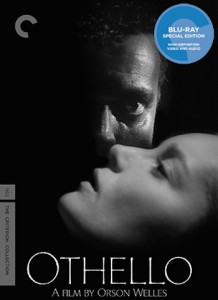
1. Othello (Orson Welles, 1952) Criterion Collection
2.Martin Scorsese’s World Cinema Project No. 2 (Limite — Mário Peixoto, Revenge — Ermek Shinarbaev, Insiang — Lino Brocka, Mysterious Object at Noon — Apichatpong Weerasethakul, Law of the Border — Lütfi Ö. Akad, Taipei Story — Edward Yang) — Criterion Collection
3. Vampir Cuadecuc (Pere Portabella, 1971) UK Second Run Features
4. The 4 Marx Brothers at Paramount (The Cocoanuts, Animal Crackers, Monkey Business, Horse Feathers, Duck Soup) (1929-1933) RB Arrow UK
5. Anatahan (Josef von Sternberg, 1953) Kino
6. A Brighter Summer Day (Edward Yang, 1991) RB Criterion UK
7. Moses and Aaron (Danièle Huillet, Jean-Marie Straub, 1973) Grasshopper Film
8. Letter from an Unknown Woman (Max Ophüls, 1948) Olive Signature
9. Lost in Paris (Dominique Abel, Fiona Gordon, 2016) Oscilloscope Pictures
10. A New Leaf (Elaine May, 1971) Olive Signature
A major reason for listing Criterion’s Othello first is that it includes the digital premieres of not one and not two but three Orson Welles features: both of his edits of Othello available with his own soundtracks, heard for the first time in the U.S. Read more
Written for Lola no. 7, posted in November 2016. — J.R.
Suspense on Ice
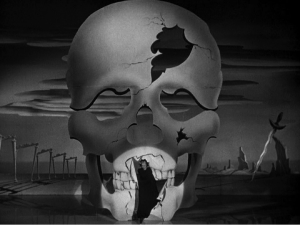
An ice-skating noir musical? More or less, with Belita serving as Monogram’s answer to Sonja Henie, and a few A-picture production numbers (such as the Daliesque one glimpsed above, climaxing with the heroine diving through a wheel ringed by long, sharp daggers pointed towards the center). Not quite a two-dollar movie (the Warners Archive DVD is pricier), but an intriguing curiosity. Philip Yordan’s original script is so pro forma that one can almost imagine him writing it in his sleep, In its early stretches, it suggests a lazy rip-off of Gilda, with different sexual inflections (no homoerotic undertones, no heterosexual love-hatred, and this time the hero and villain are the same character, played by Barry Sullivan), Yet most of it was shot at the same time as Gilda, in late 1945.
Most curious of all is the almost total lack of motivation whereby Sullivan, a thuggish tramp, gets accorded a free white coat and shave by the owner of The Ice Parade so that he can sell peanuts to the customers, and then, after dreaming up the wheel-of-dagger stunt, which Belita accepts without hesitation, gets asked by her husband-boss (Albert Dekker) to take over his position when he leaves on a trip, allowing Sullivan more of a chance to romance his beloved spouse and star. Read more
This is a slightly different edit of a dialogue proposed and inaugurated by Ehsan Khoshbakht on July 5, 2016, edited by him, and published in the British Council’s online Underline magazine on July 8. — J.R.

Abbas Kiarostami (1940-2016), arguably the greatest of Iranian filmmakers, was a master of interruption and reduction in cinema. He, who passed away on Monday in a Paris hospital, diverted cinema from its course more than once. From his experimental children’s films to deconstructing the meaning of documentary and fiction, to digital experimentation, every move brought him new admirers and cost him some of his old ones. Kiarostami provided a style, a film language, with a valid grammar of its own. On the occasion of this great loss, Jonathan Rosenbaum and I discussed some aspects of Kiarostami’s world. Jonathan, the former chief film critic at Chicago Reader, is the co-author (with Mehrnaz Saeed-Vafa) of a book on Kiarostami, available from the University of Illinois Press. – Ehsan Khoshbakht
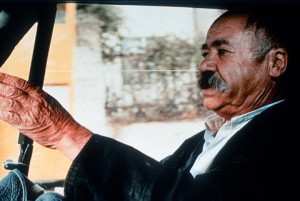
Ehsan Khoshbakht: Abbas Kiarostami’s impact on Iranian cinema was so colossal that it almost swallowed up everything before it, and to a certain extent after it. For better or worse, Iranian cinema was equated with Abbas Kiarostami. Read more
From Cinema Scope issue 39, Summer 2014. — J.R.
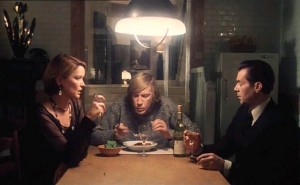
I shelled out $56.19 in US dollars (including postage) to acquire the definitive and restored, director-approved DVD of Providence (1977) from French Amazon, and I hasten to add that this was money well spent. Notwithstanding the passion and brilliance of Alain Resnais’ first two features, Providence is in many ways my favourite of his longer works, quite apart from the fact that it’s the only one in English. And I can’t ascribe this preference simply to the contribution of David Mercer (1928-1980). I recently resaw the only other Mercer-scripted film I’m familiar with, Karel Reisz’s Morgan!, and aside from the wit of its own sarcastic dialogue I mainly found it just as flat and tiresome as I did in 1966, for reasons that are well expounded in Dwight Macdonald’s contemporary review (reprinted in his collection On Movies).
I haven’t yet been able to see The Life of Riley (Aimer, boire et chanter), Resnais’ swan song, but clearly part of what gives Providence even more resonance now, writing less than a month after Resnais’ death, is the theme it shares with his penultimate feature, You Ain’t Seen Nothin’ Yet (2013): an old writer facing his own death, and trying to create some form of art in relation to it. Read more
